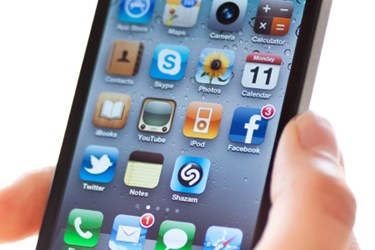6 Apps That Can Reduce Readmissions

By Christine Kern, contributing writer

Readmission rates can fall with help from new technologies.
Mobile apps that help prevent readmissions serve to help hospitals avoid financial penalties issued under the ACA for patients who return to the hospital within 30 days of discharge. The first phase of penalties targeted patients readmitted for pneumonia, heart failure, and heart attack. This year the penalties will also include readmissions for patients with COPD and total hip and total knee replacements.
With such strong incentives, providers are increasingly willing to test and invest in new technologies aimed at keeping patients out of the hospital. But whether mobile apps can actually change patients' behavior and address a long-standing issue in healthcare is still unclear.
Nevertheless, it is clear new tactics or strategies are needed to help hospitals lower their readmission rates. Medicare alone spends at least $26 billion on patients who end up returning to the hospital. Most experts agree that using technology that engages patients and can help intervene earlier in their care is promising. But there is little agreement or understanding about what data and level of patient involvement are necessary.
Modern Healthcare quotes Dr. Harry Greenspun, senior adviser at the Deloitte Center for Health Solutions, as saying, “People see an opportunity when you look at penalties for readmissions. It's not surprising that startups would tackle ... a slice of this (market).”
Despite the challenges and uncertainty, the makers of mobile apps to gather data and improve care broadly claim they can boost patient engagement and help hold down healthcare costs. Following is a snapshot of six recent apps that can help reduce readmission rates for hospitals:
- Propeller Health’s sensor and mobile app allows patients with COPD and asthma to track inhaler utilization by transmitting data to physicians about when and where the medication is used in an effort to help prevent an attack or exacerbation.
- SeamlessMD’s mobile app system asks the patient to enter information about temperature or pain level to gauge warning signs of surgical complications. It also allows patients to submit photos of surgical wounds to share with a doctor.
- The GetWellNetwork system can be used in a number of locations, including a doctor’s office, an ambulatory setting and even at home. Using mobile devices or computers, a patient with diabetes or undergoing cardiovascular or orthopedic treatments can access information about his or treatment plan and medication using the system.
- CareAtHand is a mobile and Web application helps non-skilled community caregivers to assess and track elderly patients’ medical issues and provides clinical decision support and will alert nurses about pressuring issues that may require a visit to the doctor.
- The Vocera Care Experience is a system that allows nurses and caregivers to record audio and video discharge instructions for patients, who can access discharge information anytime using a phone, mobile device or computer.
- Vital Connect’s HealthPatch MD is a biosensor that captures biometric data and can detect falls and allows providers to track a patient’s heart rate, respiratory rate, skin temperature and other data points. A patient discharged from the hospital can wear it for post-operative recovery care.
